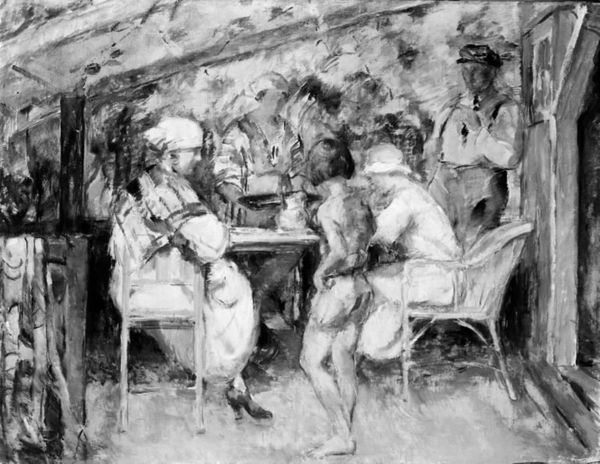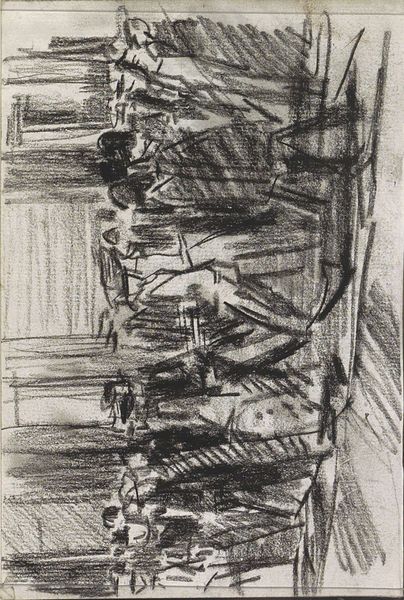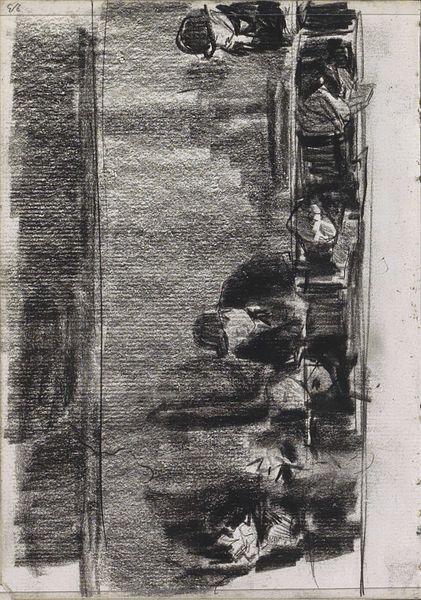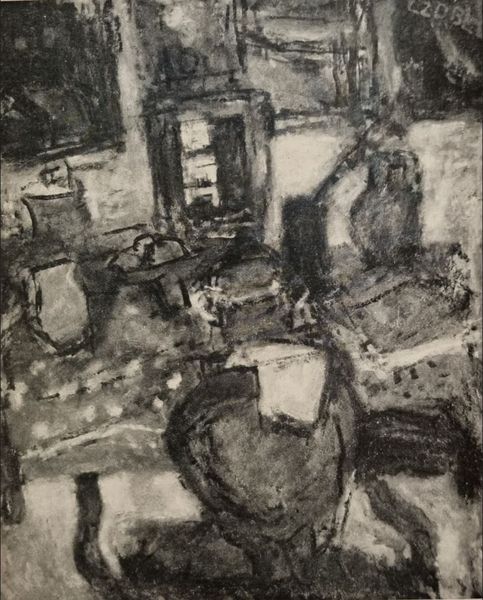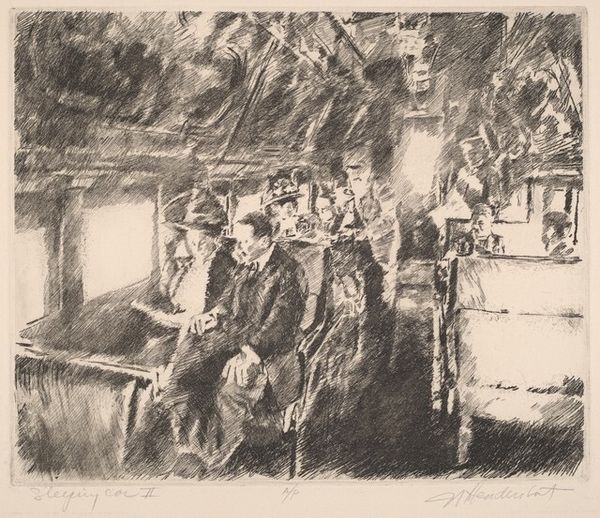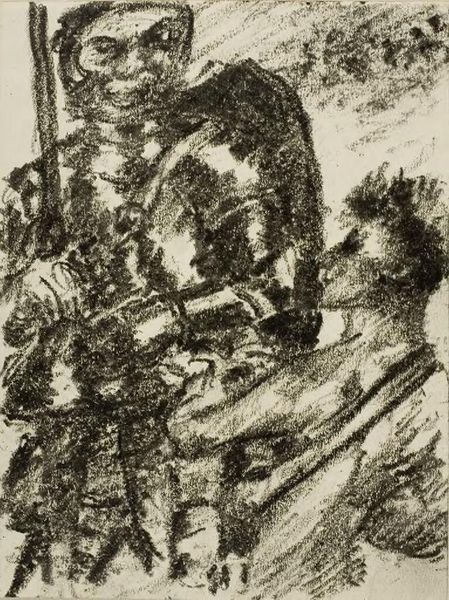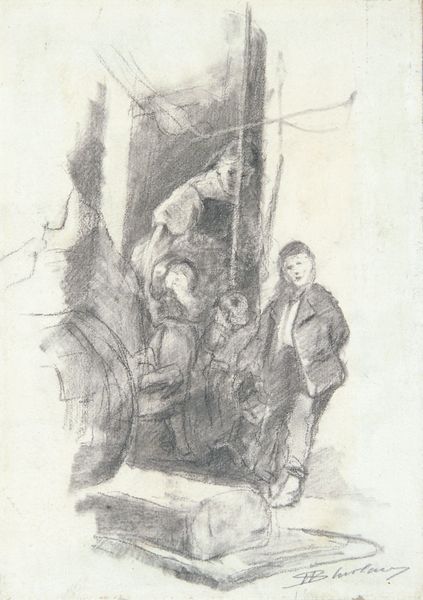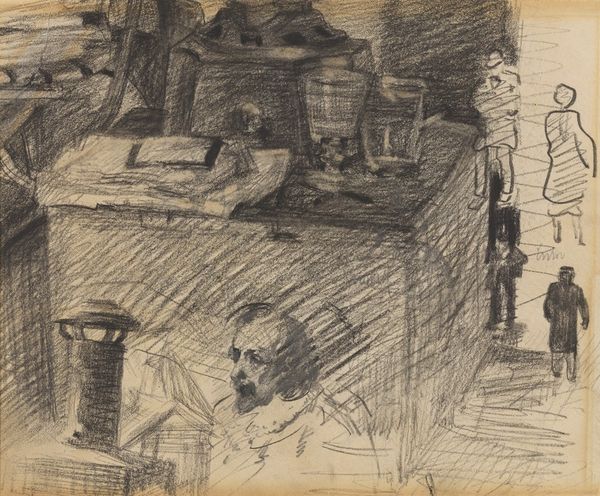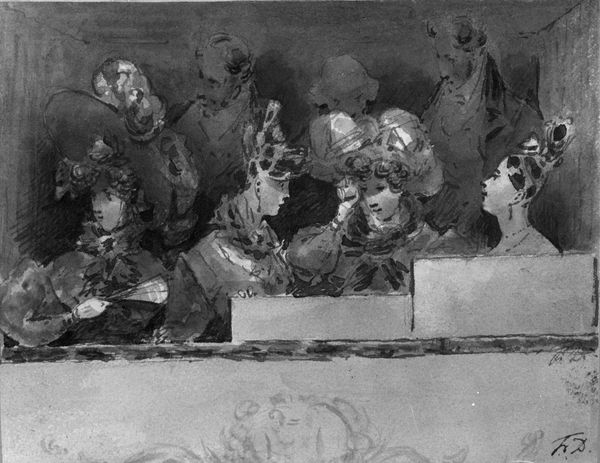
drawing, graphite, charcoal
#
drawing
#
german-expressionism
#
charcoal drawing
#
black and white
#
matter-painting
#
abstraction
#
graphite
#
charcoal
#
charcoal
#
graphite
Copyright: Bela Czobel,Fair Use
Bela Czobel made this intriguing oil painting, Nature Morte a La Marmite, in 1962. This still life uses rough brushstrokes and a muted palette to depict a collection of objects, including what appears to be a cooking pot, hence its name. Czobel was a Hungarian artist who spent significant periods in Paris, and you can see echoes of early 20th-century avant-garde movements like Fauvism and Expressionism in his style. But instead of the bright colors associated with those movements, Czobel uses a restrained, almost melancholic palette. It’s interesting to consider how the aftermath of World War II and the rise of Socialist Realism in Eastern Europe might have influenced his artistic choices, pushing him toward a more somber and introspective mode of expression. To understand Czobel’s work better, one could delve into exhibition reviews from the period, biographical accounts, and analyses of the artistic climate in post-war Europe. The meaning of art always depends so heavily on its social and institutional context.
Comments
No comments
Be the first to comment and join the conversation on the ultimate creative platform.
